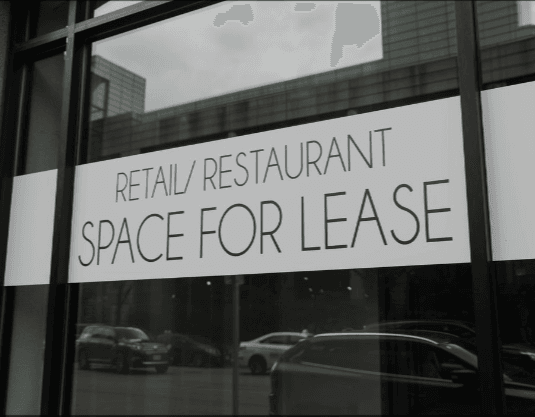Mastering Commercial Rent: Your Guide to Confident Investment Decisions
Understanding commercial rent is key to your investment success. Discover strategies to navigate complexities and make informed decisions with confidence.

Investing in commercial real estate can be a rewarding venture, but it can also come with challenges. Understanding commercial rent is crucial for making smart investment decisions. Commercial rent is the amount a tenant pays to use a space for business purposes. It can significantly affect your returns and overall investment success. Let's explore the key aspects of mastering commercial rent to help you make confident choices in your investment journey.
First, it’s essential to understand the different types of leases that can affect commercial rent. The most common types are gross leases, net leases, and modified gross leases. In a gross lease, the tenant pays a fixed rent, and the landlord covers all property expenses, including taxes, insurance, and maintenance. This lease type can provide simplicity for both parties, as it usually involves fewer negotiations.
In a net lease, tenants pay a base rent plus some or all of the property expenses. There are three types of net leases: single, double, and triple net leases. A single net lease has the tenant paying property taxes in addition to rent, while a double net lease includes taxes and insurance. A triple net lease, often preferred by landlords, requires tenants to cover taxes, insurance, and maintenance costs. Understanding these lease structures is vital, as they can affect cash flow and profitability.
Another critical aspect of commercial rent is the market rate. Market rent is the amount tenants are willing to pay based on comparable properties in your area. It is influenced by various factors, including location, property type, and current economic conditions. Keeping an eye on market trends helps investors set competitive rental rates and attract quality tenants.
When considering commercial properties, it’s also important to assess how location impacts rent. Properties in high-traffic areas or those near essential services often command higher rents. Conduct thorough research on neighborhoods, demographics, and local market dynamics to understand how these factors affect rental prices.
Understanding tenant needs is another important part of mastering commercial rent. Different businesses have varying requirements based on their industry. For example, retail tenants may prioritize visibility and foot traffic, while office tenants might look for features like conference rooms and technology infrastructure. By understanding the unique needs of potential tenants, you can create more appealing rental offerings.
Lease terms also play a vital role in commercial rent. Typical leases range from three to ten years, with longer leases providing stability for landlords and business owners alike. However, tenants may want flexibility, particularly if they are just starting or if their business model may change. Offering a variety of lease lengths can help you attract a wider range of tenants while ensuring your property remains occupied.
Rent adjustments are another critical element in commercial leasing. Many leases contain terms for periodic rent increases, which help landlords keep pace with inflation and rising market rates. These adjustments can be fixed, based on a predetermined percentage, or tied to a cost-of-living index. It’s important to clearly outline these terms in the lease agreement to avoid misunderstandings later on.
Additionally, understanding the impact of property maintenance on rent is crucial. Well-maintained properties are more attractive to tenants, allowing landlords to command higher rents. Regular maintenance and upgrades can significantly enhance the value of a property and justify higher rental rates. Don’t overlook the importance of keeping your property in top condition.
It is also wise to consider the impact of economic cycles on commercial rent. During periods of economic growth, demand for commercial spaces often rises, leading to higher rents. Conversely, during economic downturns, vacancy rates may increase, putting downward pressure on rents. Keeping an eye on economic indicators and adjusting your strategies accordingly can help you stay ahead in the commercial real estate market.
Building relationships with local businesses can also provide insights into the commercial rental market. Networking with industry peers can lead to valuable information about emerging trends, tenant demands, and competitive rates. Attend local business events, join community organizations, and participate in online forums to gather insights and build connections that can aid your investment decisions.
If you are considering investing in commercial real estate or looking to optimize your current property’s rental income, it’s essential to have a clear strategy. Start by assessing your investment goals—are you seeking long-term stability, or are you looking for quick returns? Understanding your objectives will guide your decisions regarding property selection, lease structures, and tenant relationships.
Another important step is to conduct thorough due diligence before making an investment. Ensure you evaluate the property’s financial performance, including current rents, past occupancy rates, and the condition of the property. Consider conducting a market analysis to understand comparable properties and rental rates in the area. This information can help you negotiate better lease terms and set competitive rents.
If you are new to commercial real estate investing, consider seeking the guidance of a knowledgeable mortgage loan officer. They can provide valuable insights into financing options and help you navigate the complexities of commercial mortgages. A skilled loan officer will help clarify your options, ensuring that you understand the financial implications of your investment decisions.
As you dive into the world of commercial rent and real estate investing, remember that staying informed is key to success. Regularly review market trends, local developments, and economic indicators that could impact your investments. Being proactive will help you make informed decisions and seize opportunities when they arise.
In summary, mastering commercial rent requires a comprehensive understanding of lease types, market dynamics, tenant needs, and property management. It is a multifaceted approach that can lead to confident investment decisions. If you have specific questions or need guidance tailored to your unique needs, reach out to our team of experienced mortgage loan officers. We are here to help you navigate your journey in commercial real estate investment.